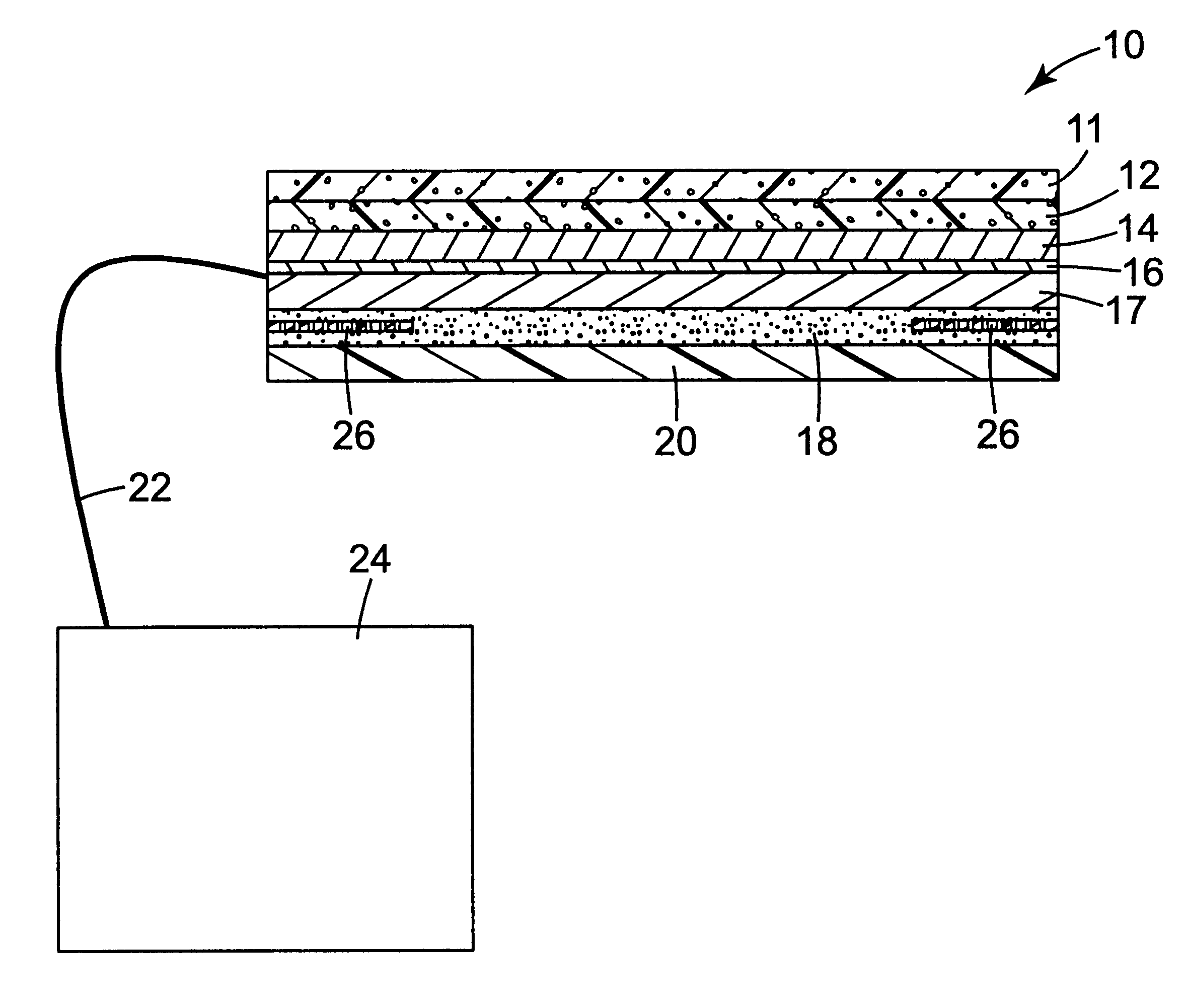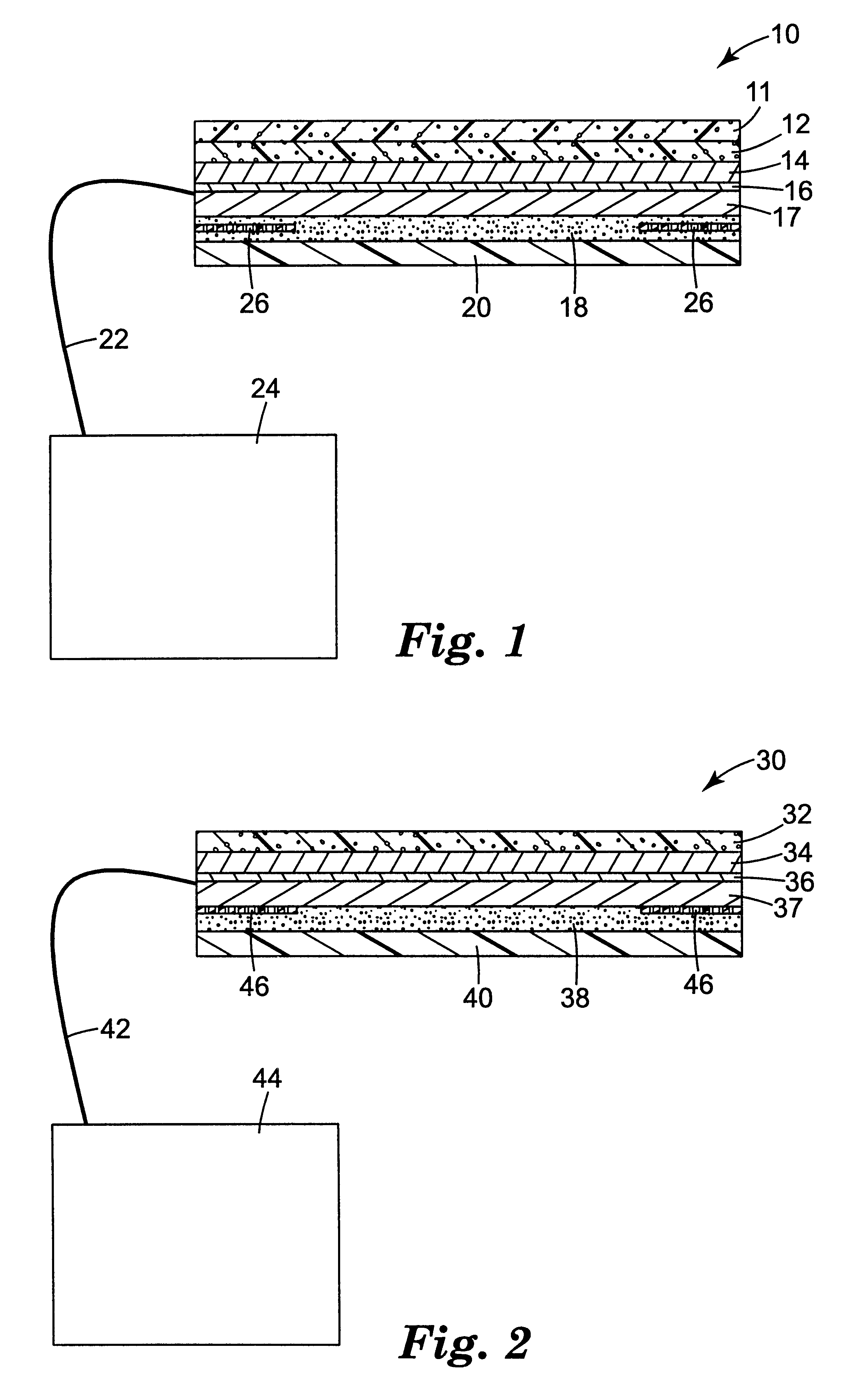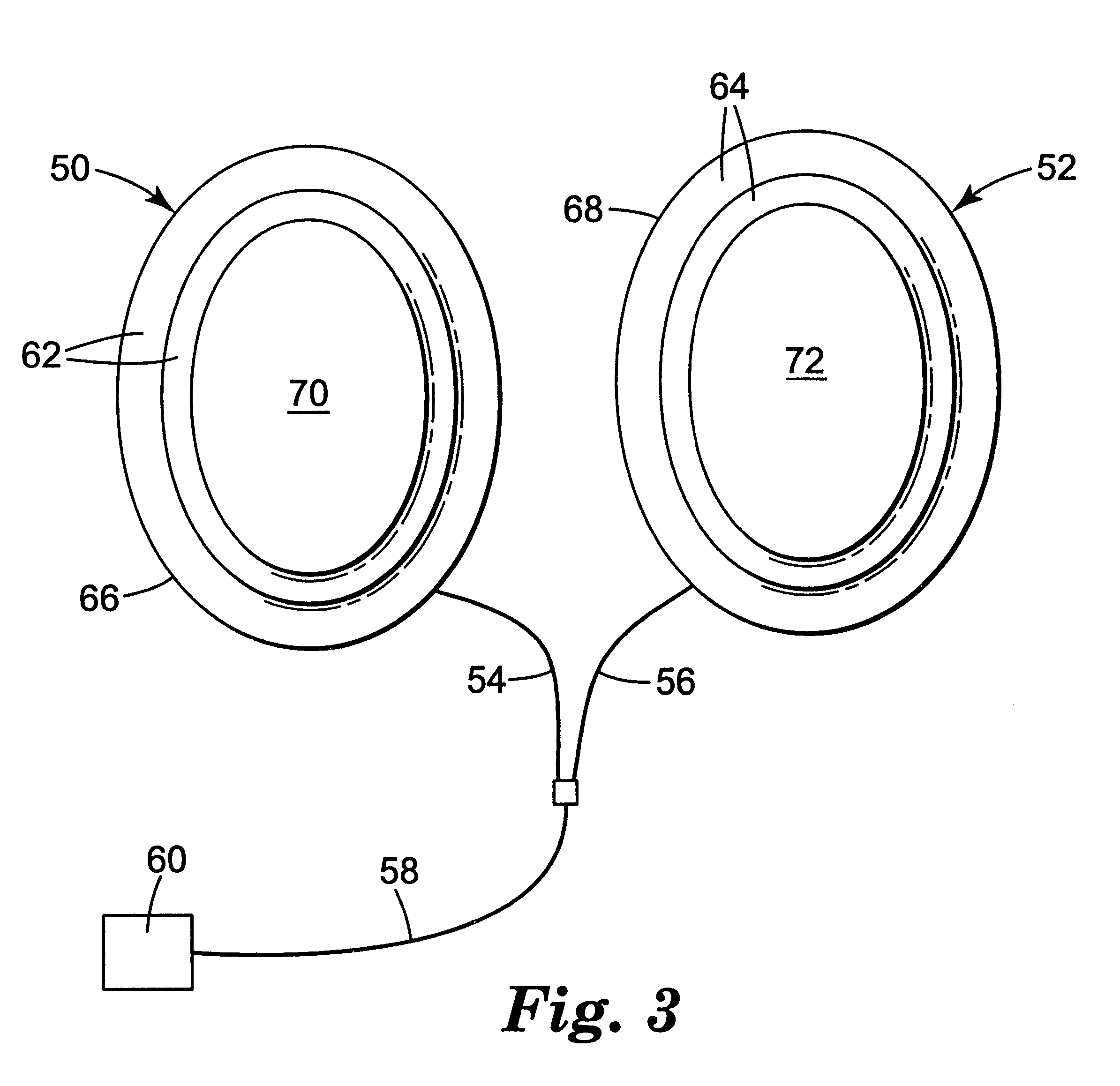Universally functional biomedical electrode
- Summary
- Abstract
- Description
- Claims
- Application Information
AI Technical Summary
Benefits of technology
Problems solved by technology
Method used
Image
Examples
example 1
A Transpore.TM. tape backing material commercially available from Minnesota Mining and Manufacturing Company (3M) of St. Paul, Minn. made of polyethylene with a small percent of ethylene vinyl acetate has the following physical characteristics: 0.102 to 0.127 mm film thickness, containing an orthogonal grid of perforations 0.020 to 0.026 mm diameter of irregular shape, and the perforations are 1 mm apart on the grid. Using two cylindrical stainless steel electrodes, the resistance of a 0.03 N KCIO.sub.4 solution placed between the circular faces was measured with and without the presence of the perforated sheet. The values measured were 0.69 and 17.7 ohms respectively, which demonstrates that Z-axis resistance can be readily controlled by the introduction of a perforated highly resistive material in an ionically conductive medium. Now from the formula R=(.zeta.. L) / A, A=(.zeta.. L) / R. If the area constituted by the perforations through which the current passed is designated by A', a...
example 2
Samples of PET film were coated with a commercially available silver ink (No. 301S from Ercon of Waltham, Mass.), and then dried. Portions of the ink surface were then overprinted with small dots by means of a thermal wax printer (Phaser III printer purchased from Tektronix), which functions in the same general way as an inkjet printer, except that the "ink" used is a thermoplastic colored wax rather than a water soluble dye. The wax itself is a highly resistive material, and samples were printed using a halftone pattern at various density levels to create a range of cross sectional conductor areas on each sample. These samples were then laminated to the hydrophilic ionically conductive adhesive described in U.S. Pat. No. 4,848,353 (Engel), and pairs of samples of identical cross sectional conductor areas were then laminated together with their adhesive faces touching. Defibrillation shocks were then sent through these pairs of samples, and the impedance was measured. The data is sh...
example 3
Using the materials and methods described in Example 2, a wax gradient design was printed using a QuarkExpress presentation software package commercially available from Quark, Inc. This design was printed on an identical silver ink conductor that was circular in shape and 12.7 cm (5 inches) in diameter, using the same thermal wax printer. A layer of the same conductive adhesive was then laminated to the printed conductor, and a control sample was made up using a 12.7 cm (5") round silver ink conductor, (with no printing on it) which was similarly laminated to a layer of conductive adhesive. FIG. 5 shows the appearance of the shaded image as was printed on the experimental sample.
The two samples were then separately tested on bovine mammalian tissue (a 1.92 kg (4.25 lbs.) chuck roast) which was attached by means of a ground plane to one lead of a PhysioControl Lifepak 9 defibrillator (Redmond, Wash.). The other lead was attached to the center of each electrode, which was placed on th...
PUM
 Login to View More
Login to View More Abstract
Description
Claims
Application Information
 Login to View More
Login to View More - R&D
- Intellectual Property
- Life Sciences
- Materials
- Tech Scout
- Unparalleled Data Quality
- Higher Quality Content
- 60% Fewer Hallucinations
Browse by: Latest US Patents, China's latest patents, Technical Efficacy Thesaurus, Application Domain, Technology Topic, Popular Technical Reports.
© 2025 PatSnap. All rights reserved.Legal|Privacy policy|Modern Slavery Act Transparency Statement|Sitemap|About US| Contact US: help@patsnap.com



